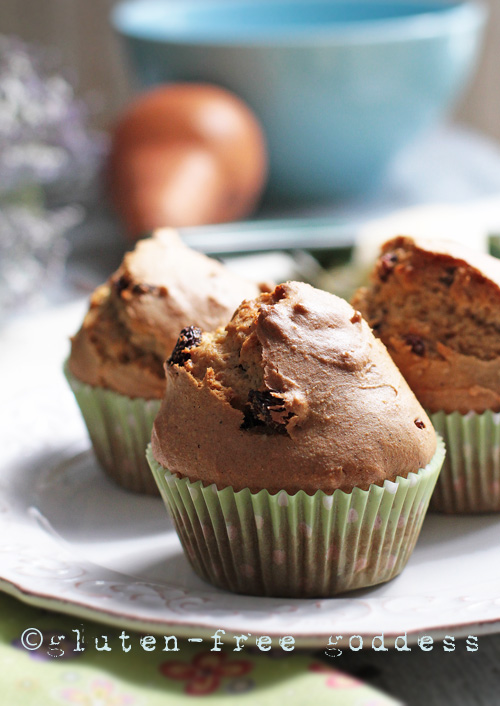FAQ
Ask the Gluten-Free Goddess
F : A : Q
How do I start the gluten-free diet?
Jump start your gluten-free journey with my Quick Start Guide to Going Gluten-Free. It covers the basics- what to avoid, what to eat, how to spot sneaky gluten. Things your Aunt Ethel needs to know when she invites you for a nosh.
Note: Gluten-Free Goddess recipes adhere to the gluten-free grains listed as safe by the Mayo Clinic and Celiac Disease Foundation.
How do I best search your recipes?
You can simply use our blog search bar at the top right corner of the blog. We also use searchable recipe labels on every post, and in the upper right corner of the blog, there's a drop-down label search.
Is spelt gluten-free?
No, Sweetpea. Spelt is NOT gluten-free. No matter what the Toms shoe wearing guy in the bulk nuts department tells you. Spelt is an ancient grain in the wheat family. It contains gluten. If you have celiac disease or gluten sensitivity, avoid it like the plague. I mean it.
What the heck is xanthan gum and why do I need it?
Xanthan gum is a polysaccharide powder typically cultured on material from corn, whey, glucose or even- gasp- wheat. Call the company and ask!
When combined with a liquid xanthan gum adds viscosity and thickness to gluten deprived batters, as well as "thickness" to salad dressings, non-dairy alternatives, and ice cream. It also adds integrity to gluten-free baked goods, making them less crumbly.
Don't like xanthan gum?
After years of using it, I must confess my tummy feels WAY better without it. See my post about it and xanthan gum recipe for wonderful blueberry muffins here.
For subbing xanthan gum in my recipes, I suggest trying flaxseed meal. Start with a tablespoon (added to my recipes instead of the xanthan gum).
Another vegan alternative choice to increase viscosity and binding is to add a tablespoon of arrowroot starch slurry to baking recipes. Arrowroot becomes a bit viscous in liquid, and may help thicken the batter (it also works in a cooked sauce). Make a tablespoon of slurry with a TB of arrowroot starch and a little water.
Another substitute choice is plain dry gelatin (not vegan). I typically use 1-2 teaspoons in a baking recipe.
Some alternative bakers use chia seed gel as a binder.
You can also try what I often do- just bake without it. Especially if it's a recipe with mashed fruit- like bananas, pumpkin, or applesauce. The fruit alone adds extra moisture and cohesiveness. Fruits contain pectin which can help bind the batter. I've also tried yogurt, and sour cream for the liquids in a baking recipe- that helps, too.
What is the latest on oats?
See the latest news regarding oats and the Purity Protocol needed for oat safety at Gluten-Free Watchdog.
Is potato starch the same thing as potato flour?
Thank you for asking. You'll now avoid a lot of heartache. No- potato starch is more often used in baking gluten-free; it imparts a tender crumb and a lighter rise. It will make you happy. Potato flour is gluey and heavy; it is typically used sparingly in thickening sauces or soups; I rarely use it in baking. Though it can work in certain biscuit and dough recipes.
My child needs to follow a gluten-free casein-free diet or do you have any dairy-free lactose-free recipes and cooking tips?
Many of my recipes are also dairy-free. See my dairy-free recipes here. Most recipes also offer substitutions; I've baked my recipes both with real dairy and dairy-free options, with equal success.
Some celiac-savvy doctors suspect that roughly 50% of people with celiac disease are allergic to dairy proteins; and many newly diagnosed celiacs are lactose intolerant.
Note that both gluten and lactose are FODMAPs, read up on FODMAPs here, and see if that is an issue.
For detailed help see:
What are FODMAPs--- ?
Consider your symptoms- if you experience bloating and IBS symptoms- even after shunning gluten and dairy- ask your doctor about FODMAPs- fructose, fructans and polysaccahrides that many food sensitive individuals have trouble digesting. Find more info (and my low FODMAP recipes) here.
Do you accept free products or coupons in exchange for a blog post or review?
Sorry, no. Truth is, product reviews, coupons, giveaways and contests don't interest me. My focus is creating, developing and sharing gluten-free recipes.
Do I need permission to post one of your recipes?
Practice good netiquette and good karma will circle back to you. Posting someone else's original recipes without attribution and a link back to the original recipe is considered bad form sad rude. Play nice. Give proper credit.
Use "Adapted from..." and share the original recipe link if you tweak an ingredient or two.
Developing recipes takes creativity, energy, a lot of experimentation- and patience. Not to mention, time, and the cost of ingredients.
Note to commercial venues and sites selling products, subscriptions or services: I do not grant permission to use, post, copy or distribute my recipes.
Gluten-Free Goddess Recipes are original recipes, developed in our own home kitchen, and remain an integral part of the larger creative work known as Gluten-Free Goddess Recipes at https://www.glutenfreegoddess.blogspot.com as well as the Gluten-Free Goddess cookbook and ebook available at iTunes.
All content (including text and photography) on Gluten-Free Goddess Recipes is original and copyrighted ©2005-2024 by author and recipe developer Karina Allrich. All rights reserved in all media. No copying, reposting, publishing, broadcasting or distributing in electronic, digital, or analog format without prior written permission.
Do you sell baked goods?
No darling. Although I've been blogging my recipes online since 2005, I do not sell baked goods or run a bakery. I've heard through the grapevine that several "Gluten Free Goddess" bakeries have popped up, from coast to coast. That's fine. Just don't believe it's me- or my original recipes.
I can't vouch for any of them.







